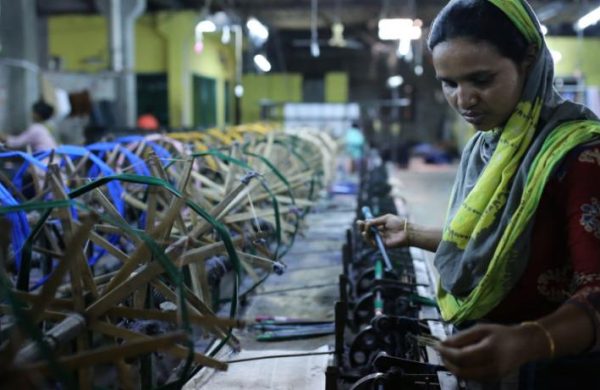Women’s participation in labour force falling
- Update Time : Monday, September 15, 2025

TDS Desk:
Bangladesh’s labour force shrank by 17 lakh in just one year, with women accounting for most of the decline, according to the final report of the BBS’s Labour Force Survey 2024.
The report shows that the total labour force stood at 7.17 crore in 2024, down from 7.34 crore the previous year. Male participation remained largely unchanged at 4.8 crore, compared with 4.81 crore in 2023. Female participation, however, fell sharply from 2.53 crore to 2.37 crore over the same period.
This marks the first contraction in the country’s labour force since 2010. Between 2010 and 2023, the labour force expanded by more than 1.6 crore, driven largely by rising female participation, which grew from 1.72 crore in 2010 to 2.53 crore in 2023.
“Women’s labour force participation tends to vary with the level of development,” said Rizwanul Islam, former special adviser at the International Labour Organization’s (ILO) Geneva office.
He pointed to a U-shaped relationship: participation declines at the middle stage of development and rises again at higher stages. One reason, he explained, is that as education enrolment increases, labour force participation often falls.
“Employment opportunities, especially in manufacturing, are shrinking. This may explain the decline in urban labour force participation among women with little or no education,” he said.
Islam noted that for women with higher levels of education, the picture is more complex. Limited availability of jobs matching their aspirations, the absence of supportive infrastructure such as childcare facilities, and social factors all play a role.
To increase labour force participation among educated urban women, he emphasised the need to create more opportunities in modern service sectors, including education, healthcare, finance, and hospitality.
Sayema Haque Bidisha, professor of economics at the University of Dhaka, pointed out that in the mainstream labour market, comprising urban, semi-skilled, and formal jobs, there is not much improvement in women’s participation.
“This is tied to structural transformation. The economy is naturally moving away from agriculture, but the fruits of this transformation are not reflected in employment, especially not in female employment,” she opined. Bidisha highlighted four main factors behind the decline.
First, job creation overall remains slow, which is widely termed a case of jobless growth. “If job creation is weak, women’s participation also suffers.”
Second, in the female-specific context, competition in the garment industry has intensified with the advent of automation and advanced technologies.
“Statistics, though not always from official sources, show women’s share in garments is now around 65 percent, compared to over 80 percent earlier,” she said, adding that women now require more skills and training to remain competitive.
“This decline in women’s share of formal, urban manufacturing jobs is the most important issue,” she said.
Third, in the rural non-farm sector, women’s participation as entrepreneurs is limited due to barriers such as a lack of capital, market access, and information. “Policy and financial support here are insufficient.”
Finally, much of the rural participation is unpaid or temporary.
For instance, when men migrate to the cities, women temporarily take up agricultural work, but when the men return, they often withdraw from the labour force again. “So, the increase may have been temporary rather than permanent.”
Bidisha also noted that while female labour force participation was reported at 43 percent in 2022 and hailed as a positive development, most of the increase came from rural areas. “Urban participation remained low, and in numbers, the rise was only a few hundred thousand, not dramatic.”
She identified the quality of women’s employment as the major concern. “In manufacturing, formal, urban, and skill-based female jobs have not shown encouraging trends.”
Bidisha, also a former research director of the South Asian Network on Economic Modeling, said an increase in agriculture is not negative, but the real concern is whether women are accessing better-quality jobs that match the economy’s structural shift.
“Ideally, employment should move toward manufacturing and small service sectors, but we are not seeing that shift at all,” she added.

















